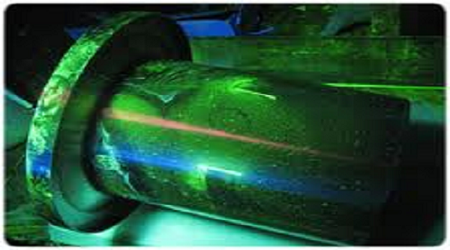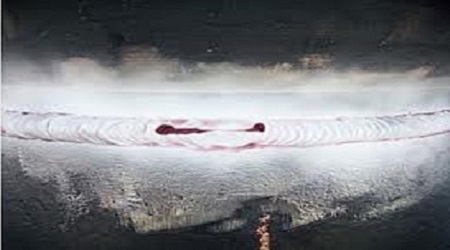Liquid Penetrant Testing:
Liquid Penetrant Testing (LPT) is one of the most widely used nondestructive examination (NDE) methods. Its popularity can be attributed to two main factors: its relative ease of use and its flexibility. LPT can be used to inspect almost any material provided that its surface is not extremely rough or porous. Materials that are commonly inspected using LPT include the following: Metals (aluminum, copper, steel, titanium, etc.). Glass, Many ceramic materials, Rubber & Plastics. LPT offers flexibility in performing inspections because it can be applied in a large variety of applications ranging from automotive spark plugs to critical aircraft components. Penetrant materials can be applied with a spray can or a cotton swab to inspect for flaws known to occur in a specific area or it can be applied by dipping or spraying to quickly inspect large areas. In the image above, visible dye penetrant is being locally applied to a highly loaded connecting point to check for fatigue cracking.



